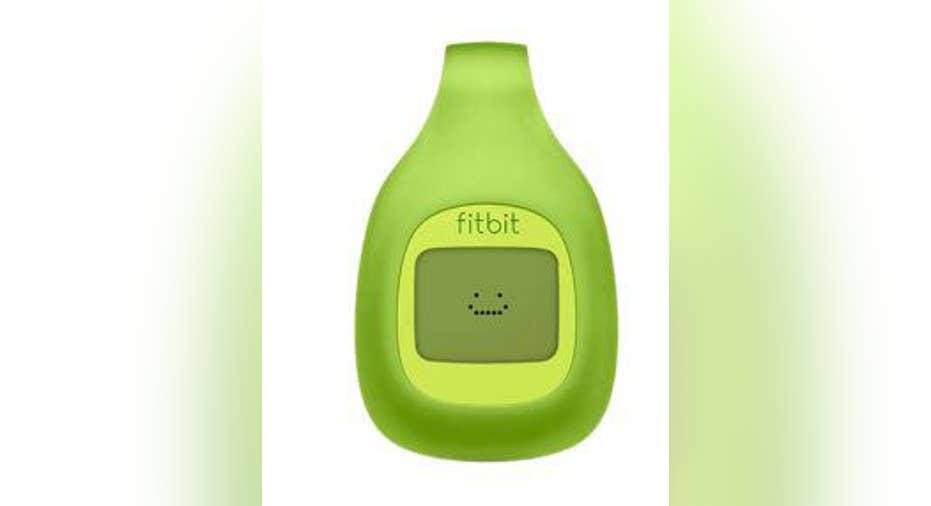Fitbit Inc.'s Worst Product in 2015

Fitbit Zip. Photo: Fitbit
Fitbit released two new fitness trackers in 2015 -- the Charge HR and the Surge. It continues to sell four older models as well: the Flex, the Charge, the One, and the Zip. Priced between $60 and $250, all six of Fitbit's trackers wirelessly sync with its app and offer a variety of fitness-oriented features, including step and sleep tracking.
When it comes to wearbles, Fitbit remains the market leader, and for good reason. Almost all of these trackers have been well-received by critics and consumers alike. But some Fitbit products are better than others. Priced at just $60, the Fitbit Zip may look like a bargain, but it's the company's single worst product.
Fitbit's cheapest tracker is still overpricedGiven that it's Fitbit's cheapest tracker, it's not surprising that the Zip lacks many of the features found on the company's other models. The Zip can't track sleep or flights of stairs climbed like the One or the Flex can. It doesn't offer caller ID like the Charge and the Charge HR do. And it can't control the music playing on your mobile device or track your location with GPS like the Surge can.
So what exactly does the Zip do? Not much. In fact, it does just one thing: track the number of steps its wearer has taken. Admittedly, using that measurement, it can calculate your distance traveled and give a rough estimate of calories burned, but for all practical purposes, it's simply a pedometer.
Of course, there's a crucial difference between a generic, $5 pedometer and the Fitbit Zip -- pedometers don't wirelessly integrate with the Fitbit app. That software integration simultaneously adds a level of complexity and convenience, automatically tracking activity, and offering insights and the ability to compete with friends.
That was enough when it made its debut early in 2013, but the market for fitness wearables has come a long way since then. Consumers can get a similar experience from a device that costs about one-quarter the price. Xiaomi's Mi Band retails for around $15, yet offers more functionality than the Zip, including sleep tracking, vibrating alarms, and phone call notifications. Buyers miss out on Fitbit's software, but they can make use of alternatives, including Google Fit (labeled one of the best fitness appsby The Verge).
Moving upmarketFitbit reports the number of devices it sells each quarter, but doesn't break out the details for individual models. Still, it seems unlikely that the Zip is selling in massive quantities. In the third quarter, 79% of Fitbit's revenue came from its newer Charge, Charge HR, and Surge models. Fitbit's management has placed greater emphasis on this metric as it has sought to move upmarket. The two trackers Fitbit introduced in 2015 -- the $249 Fitbit Surge and $149 Charge HR -- are the most expensive in the company's history.
Fitbit has likely kept the Zip around as a way to give consumers a cheap entry point into its ecosystem. But even at $60, it's too expensive. Fitbit remains the wearables leader, but other firms are gaining market share. According to research firm IDC, in the third quarter, Xiaomi -- led by surging demand for its cheap Mi Band -- captured 17.4% of the market, a gain of over 800% on an annual basis.
If you're in the market for a Fitbit, and can't afford the higher-end models, you'd be much better served with the Charge, Flex, or One. They're all a bit more expensive than the Zip, but the additional features are worth the higher price.
The article Fitbit Inc.'s Worst Product in 2015 originally appeared on Fool.com.
Sam Mattera has no position in any stocks mentioned. The Motley Fool has no position in any of the stocks mentioned. Try any of our Foolish newsletter services free for 30 days. We Fools may not all hold the same opinions, but we all believe that considering a diverse range of insights makes us better investors. The Motley Fool has a disclosure policy.
Copyright 1995 - 2015 The Motley Fool, LLC. All rights reserved. The Motley Fool has a disclosure policy.